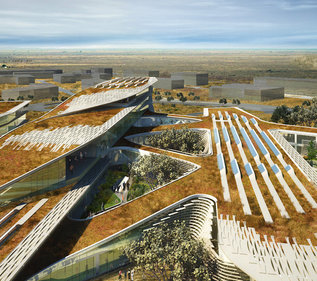The 24 billion-pula ($2.2 billion) plan to enlarge the Jwaneng operation in Botswana will eventually access an estimated 110 million carats through an area known as Cut 8, General Manager Albert Milton said in an interview at the mine, 120 kilometers (75 miles) west of the capital, Gaborone.
Debswana Diamond Co., a joint venture between the Anglo American Plc unit and the nation’s government, started the extension at Jwaneng in 2010, the largest single investment in the southern African country.
Cut 8 will become the mine’s main source of the gems in 2018, Anglo said in July last year. Miners have moved about 344 million metric tons of the 500 million tons of rock and soil needed to access the diamond-bearing ore known as kimberlite and have already found some, Milton said.
“We are encountering ore in the south already,” Milton said. “We are not far from reaching ore in the north, and in the next couple of weeks we should be encountering it there too. We will continue exposing limited amounts throughout 2016 and 2017, but by 2018 we will be fully in the ore.”
Mining companies cut about a quarter of global supply last year to arrest the 18 percent slump in rough-diamond prices brought on by China’s economic slowdown and an industrywide credit crunch. Prices have climbed 5.1 percent in 2016.
Last year, Jwaneng’s production declined 13 percent to 9.8 million carats, with most of its output from the Cut 7 ore body. The output represented 34 percent of De Beers’ global diamond production in 2015.
The mine plans to cut its operating costs by 3 percent this year, Milton said.
“Last year, we managed to stay afloat through cost management, with efficiencies in big machines, tires and blasting,” he said. “This year again, we are looking at the same. It’s never a bad thing to cut costs.”
Before it's here, it's on the Bloomberg Terminal.


